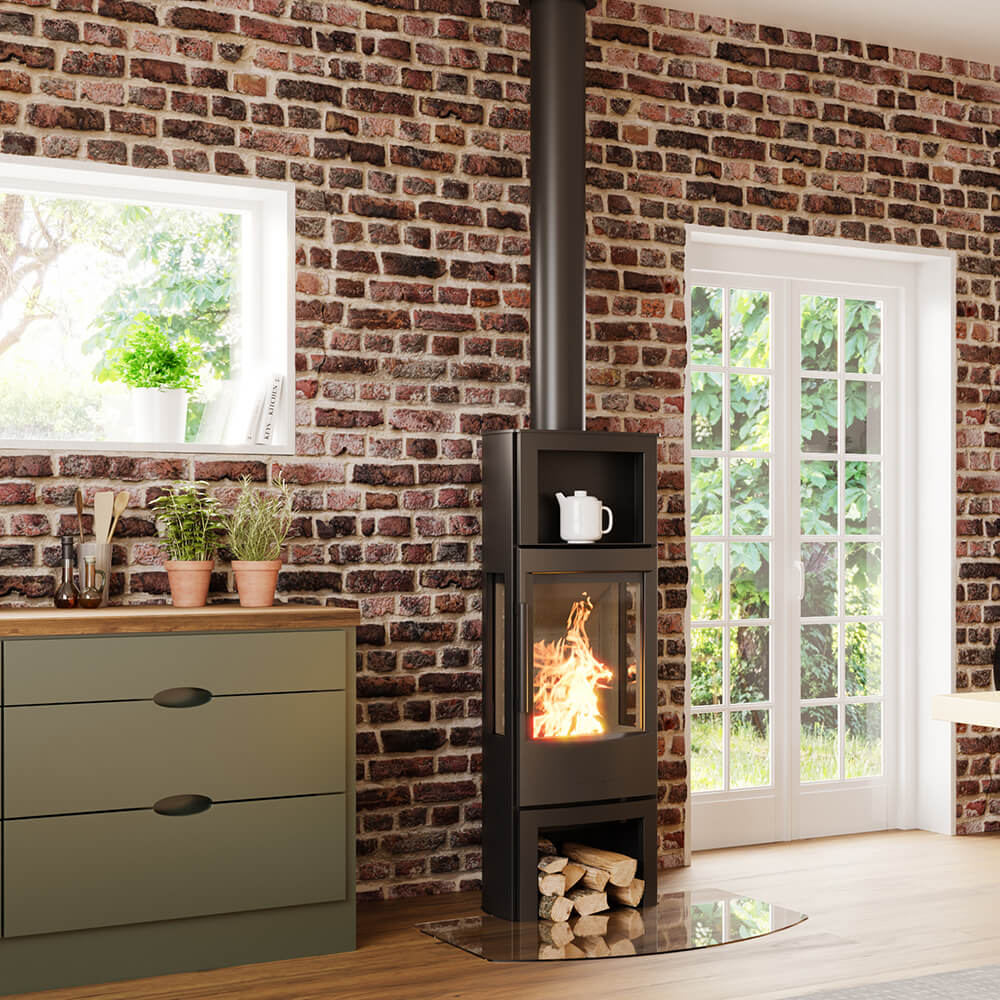Looking for installation guides, user manuals, or product information? Browse our collection of manuals for HWAM wood-burning stoves products—all in one place.
Still have questions? Our trusted retail partners are here to help. Find your nearest retailer
CONGRATULATIONS ON YOUR NEW HWAM BURNING STOVE.
HWAM products are all made with high-quality craftsmanship, manufactured from first-class material and subject to a thorough quality control process. Therefore, we are convinced that your new wood burning stove will perform smoothly for many years to come.
However, should a problem arise, then naturally we wish to give you the best possible service.
1. DURATION OF GUARANTEE
HWAM A/S offer an extended 5-year guarantee on the basic construction of the wood burning stove. The guarantee runs from the date of purchase. The basic construction includes metal parts, weldings, cast iron top plates and the steel construction of the combustion chamber door (normal consumable and movable parts like glass, gaskets and hinges not included).
For electronic components such as HWAM® SmartControl™ and the mechanical HWAM® Autopilot™ and HWAM A/S offer a 2-year guarantee. Specific spare parts around the combustion chamber carry a 6-month guarantee, exclusively against manufacturing defects.
2. EXTENT OF GUARANTEE AND CLAIMS
Claims can only be submitted in the country where the product was originally delivered. The right to submit claims is given to the first buyer of the product and cannot be handed over to a second party (except in situations with resale). All claims must be addressed directly to the retailer who sold the product, since HWAM A/S do not handle claims directly from the end-user.
The guarantee is always conditional on the presentation of the original invoice and documentation of the serial number. Pictures, whenever possible, will speed up the claim process. The guarantee runs from the date of purchase from the retailer.
Before you send your claim, you should inspect your HWAM wood burning stove for possible defects that you are able to rectify yourself. Please also check the user instructions. Should your claim or a service call prove to be unwarranted, then you will be invoiced for the associated costs.
Shipping or handling expenses, when returning a wood burning stove or parts from a wood burning stove for replacement or repair, are not covered by HWAM A/S unless they refer to an approved claim. For the purchase of normal consumable parts, HWAM A/S would of course be happy to make an offer.
3. LIMITATIONS & LOSS OF GUARANTEE
Certain parts on the wood burning stove are not covered by the guarantee.
This applies to the following:
The guarantee may be terminated if the wood burning stove is not maintained or operated according to the instructions.
Claims for damage to normal consumable parts are only accepted if it can be proved that the product was damaged when it arrived at the end-user. Picture documentation is required.
SKAMOLEX
Skamolex is a natural material that will expand during heating. As long as the Skamolex is placed correctly in the combustion chamber it is fully functional and will, despite any possible dents or thin craks, not weaken the performance of the wood-burning stove. Therefore, the 6-month guarantee is only valid upon detection of a manufacturing defect.
GLASS
If the glass turns out to be damaged upon receive of the wood burning stove, most likely it will be due to a rough transportation, and a claim must immediately be filed against the freight company. Damaged glass will not be recognised by HWAM A/S as a legitimate claim.
The glass in a HWAM wood burning stove is a special heat resistant ceramic glass that can endure very high temperatures. White or sooty glass will be a consequence of incorrect use of the wood burning stove and therefore not covered by the guarantee. Should a manufacturing defect appear in the glass we offer a 6- month guarantee. Possible defects such as e.g. a crack will show already after the first few lightings, and a claim must be submitted immediately to rely on the guarantee.
SURFACE TREATMENT
If the surface treatment is inadequate or tends to crack, this should become apparent already after the first few lightings. It could be clear cracks or even large flakes of paint peeling off. If the surface treatment peels off it is likely due to a manufacturing defect, and it is required that a claim is submitted immediately to make use of the guarantee. After more lightings the guarantee will have terminated, and a claim will be rejected.
SOAPSTONE & NATURAL STONE
The types of stone used for HWAM wood burning stoves is a natural material and therefore it is most likely to see a variation in both structure and colour. Such variation is not covered by the guarantee. However, should a crack or even a break in the stone show after a few lightings, then a claim must be submitted immediately to make use of the guarantee.
CERAMIC TILES
Any cracks or even a break in the ceramic tiles will show already after a few lightings and a claim must be submitted immediately to make use of the guarantee.
4. RETURN
If a wood burning stove or some of its parts are to be returned to HWAM A/S for repair under warranty, the extent of the repair must be evaluated together with the dealer to decide e.g. the return transport. HWAM A/S do not accept the return of the entire wood-burning stove if the actual part for repair is only a spare part that can easily be separated from the stove and returned individually.
5. SERVICE & MAINTENANCE
To ensure optimum performance of your new wood burning stove, always observe the maintenance and service instructions.
– 26.10.2018
Every HWAM wood-burning stove is tested to meet strict international standards for safety, efficiency, and environmental responsibility. On this page, you’ll find documentation and approvals that confirm our commitment to quality and compliance across global markets.
For detailed technical specifications, certifications, or test results, browse the available documentation or contact your local HWAM retailer.

A successful fire begins with the right setup. Using the correct type and size of kindling and firewood—and lighting it properly—ensures your HWAM stove reaches optimal temperature quickly and burns efficiently from the start. Follow these simple guidelines to get the most out of every fire.

HWAM stoves are designed to deliver air exactly where it’s needed for a fast, clean burn. As the user, your role is to light the fire correctly—this creates the ideal conditions to quickly reach the high temperatures required for optimal combustion.
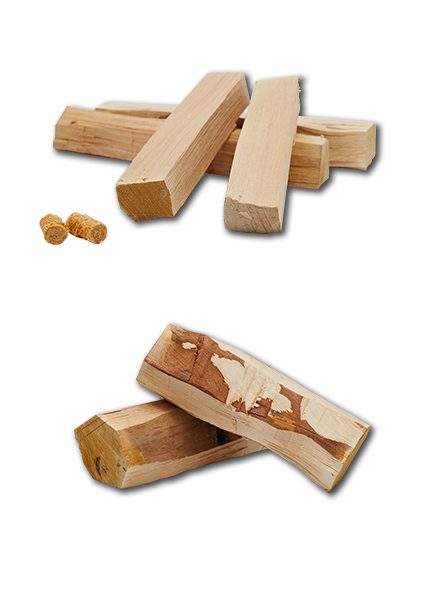
Wood combustion is a natural process—but in a HWAM stove, it’s refined to perfection. Our stoves are engineered to manage the three stages of wood burning with exceptional efficiency: drying, gasification, and ignition of gases. The result? More heat from less wood, cleaner emissions, and a warmer home with minimal environmental impact.
Three elements must be present to start and maintain a fire:
If one of them is missing, the combustion process dies out.
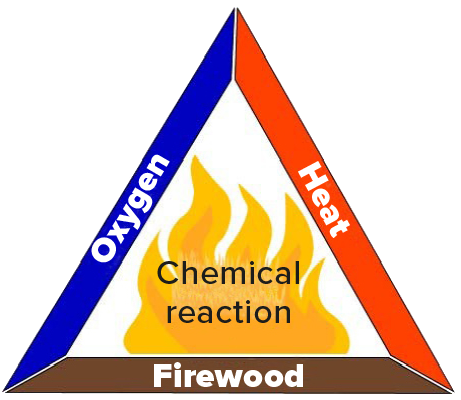
For clean and complete combustion, three key elements are required:
When these conditions are met, efficient and environmentally friendly combustion occurs.
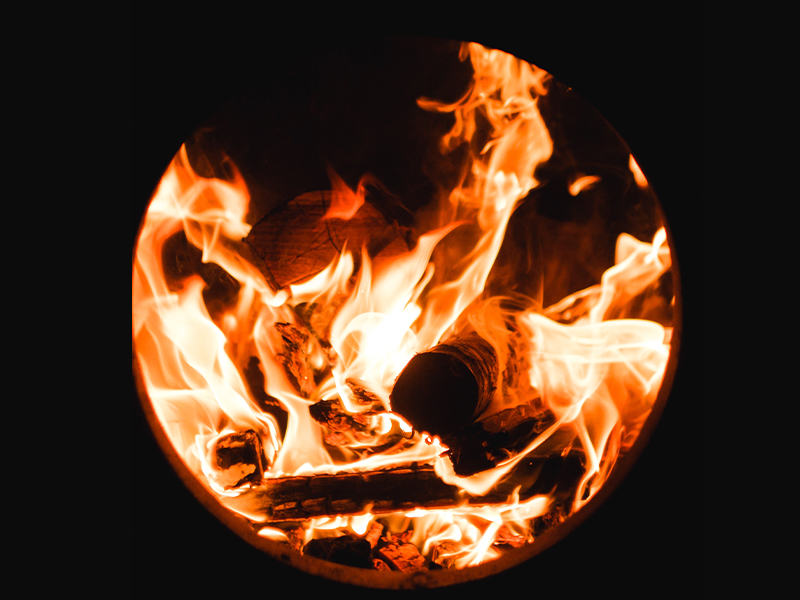
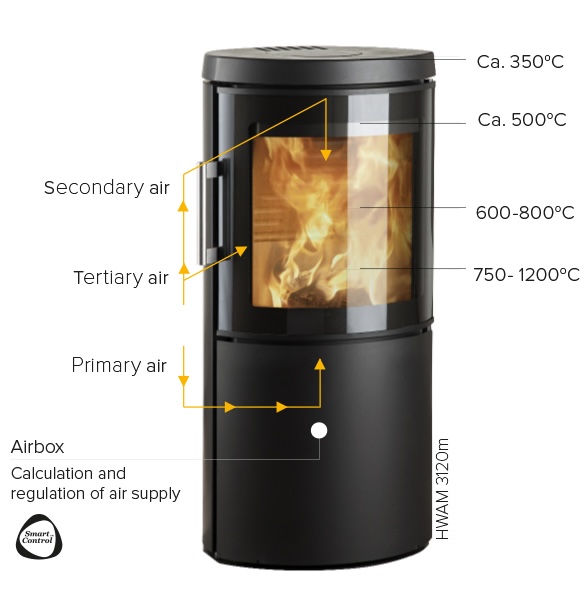
Phase 1: Ignition and Heating
Primary and secondary air is introduced. The primary air from beneath the fire accelerates combustion, quickly raising the temperature inside the chamber.
Phase 2: Gas Burning
As the wood releases gases, secondary and tertiary air is directed above the flames to ignite and burn these gases—producing clean, high-energy heat.
Phase 3: Charcoal Combustion
In the final stage, the airflow is reduced. The remaining embers receive just enough primary and secondary air to sustain high temperatures and ensure complete combustion.
When you choose a HWAM wood-burning stove, you’re investing in intelligent design that ensures optimal combustion every time you light a fire.
Every HWAM stove comes standard with HWAM® Autopilot™, a mechanical system that automatically regulates airflow for efficient, eco-friendly burning—without the need for manual adjustments.
Looking for even more control? HWAM® SmartControl™ is available as an optional upgrade on most models, giving you digital precision and effortless temperature management via your smartphone or tablet.
Easily update your HWAM wood-burning stove with the latest version of the IHS Insight™ program for Windows. If you’ve previously installed an older version, it will be automatically removed during the update.
Click below to download the updated software and follow the on-screen instructions to complete the process.
If you want to get the most out of the heat from your wood-burning stove, it is beneficial to buy one with natural stone cladding.
The stone cladding on your wood-burning stove stores the heat from the fire, and when the fire goes out, the stones are heated and slowly release the stored heat over time. Therefore, it takes longer before it gets cold again.
Selected models from HWAM are available with natural stone cladding.
This will depend on the room size and the insulation properties of your house. Always seek expert advice from your HWAM retailer or installing engineer.
Before you install your wood-burning stove, you must find out whether the walls and floors around the stove are combustible or non-combustible.
There are different requirements for the distances to the various materials for optimal safety.
The requirements for your HWAM wood-burning stove can be found in the accompanying manual.
The requirements for a wood-burning stove vary depending on the country where you install it. Therefore, check the local requirements before buying your new stove.
If you are unsure, you can always contact your local dealer for advice.
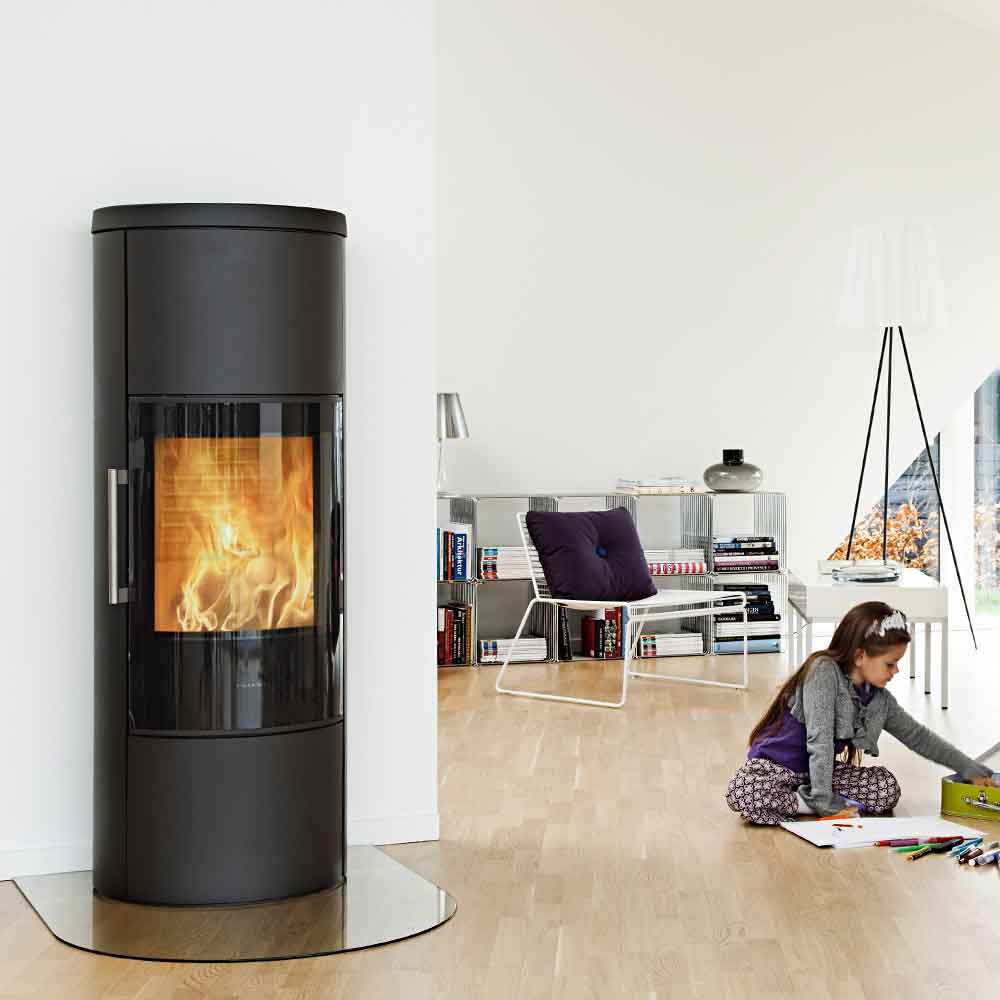
Before you install your wood-burning stove, you should read the accompanying manual to see the required distances to combustible materials, the weight of the stove, and where the hole for the chimney should be.
We would always recommend a trained and competent heating engineer to install the HWAM stoves.
Pay particular attention to the distance to combustible/non-combustible materials – you can find this information in the accompanying manual.
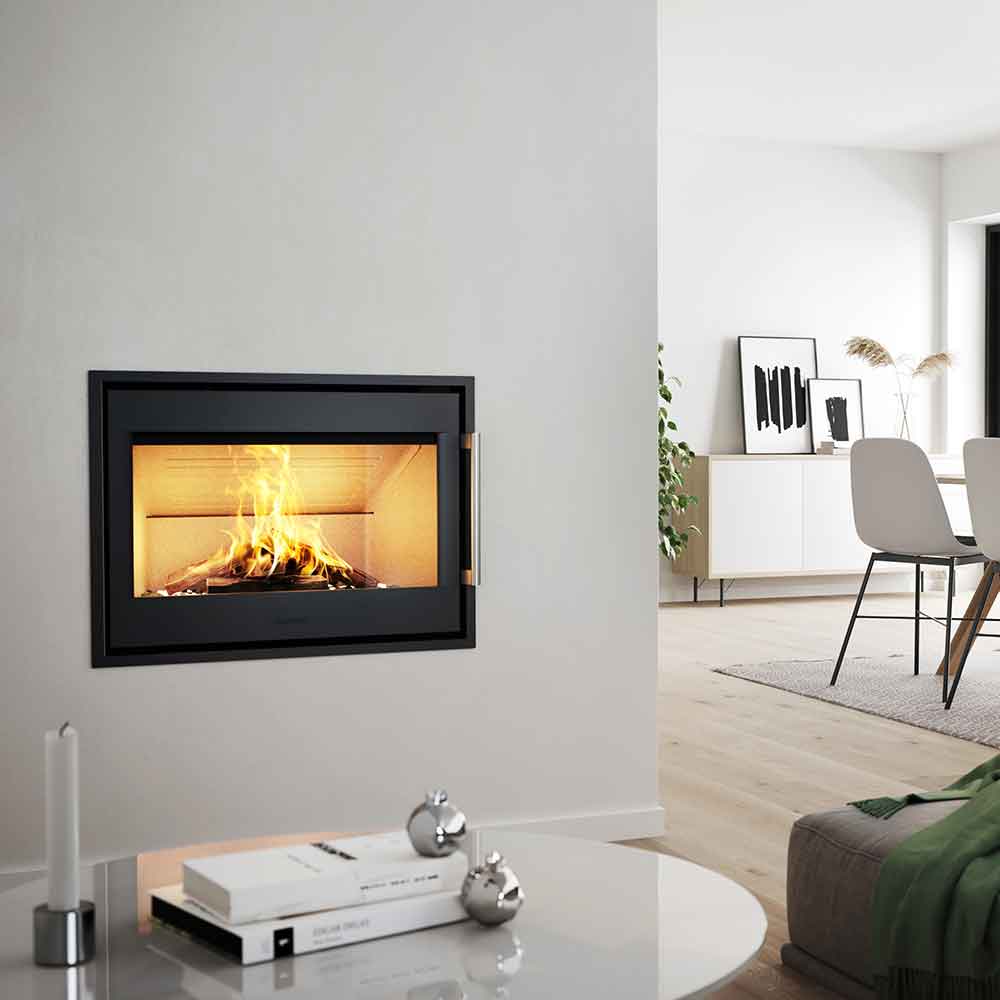
If the paint on your wood-burning stove is peeling or cracking over time, it can be repaired. You can carefully scrape off the peeling paint and repaint with Senotherm. The best result is achieved by spraying several thin layers until you have achieved the desired result. If you spray too thickly, the paint can run and look unsightly.
If you have a scratch in the natural stone cladding on your wood-burning stove, you should follow the instructions in your stove for repairing the damage. Each natural stone is different and requires different treatment.
If you are unsure how to treat the stone, contact your local retailer here ►
After prolonged use, smaller gaskets around the ash pan and similar areas can become loose and fall off. These can be easily replaced, and you can contact your local retailer to purchase the correct gaskets and heat-resistant adhesive.
The glass in the wood-burning stove is special ceramic glass that can withstand very high temperatures. However, at high temperatures and during heating and cooling phases, the glass is particularly sensitive to impacts and shocks. If the door is slammed hard or the glass is struck in some way, it risks breaking.
If the handle on your wood-burning stove is loose, you can tighten it yourself. You can find the screws for the handle by opening the door and tightening them carefully.
If you are unsure, you can contact your local retailer. They can guide you, or a service technician can come out to you.
The material vermiculite is porous and does not withstand impacts or shocks. If the plates crack, it is usually because the material has been struck by a piece of wood or similar. It is not crucial for the insulating effect that they are cracked as long as the plates are still correctly positioned in the wood-burning stove.
Vermiculite plates should be replaced when they are worn down to about half thickness. After this, they no longer insulate optimally and cannot ensure the correct combustion temperature, nor do they protect the wood-burning stove from the high temperatures in the combustion chamber.
The plates in the combustion chamber are made of vermiculite, a specially manufactured material that withstands high heat and insulates effectively. This ensures both optimal temperature and optimal combustion in the combustion chamber.
The material vermiculite is porous and does not withstand impacts or shocks. If the plates crack, it is usually because the material has been struck by a piece of wood or similar. It is not crucial for the insulating effect that they are cracked as long as the plates are still correctly positioned in the wood-burning stove.
Vermiculite plates should be replaced when they are worn down to about half thickness. After this, they no longer insulate optimally and cannot ensure the correct combustion temperature, nor do they protect the wood-burning stove from the high temperatures in the combustion chamber.
Stains from grease or similar can be washed off with a neutral, colourless cleaning agent:
Ensure that the stone is cooled to room temperature before cleaning.
Moisten the stain with undiluted, colourless cleaning agent and let it sit for a few minutes.
Wash the surface with clean, warm water.
Repeat if necessary.
Difficult stains
Particularly difficult stains can, with great care, be removed with acetone or colourless household alcohol.
Alternatively, the surface can be sanded with sandpaper no. 240 or no. 320 until the scratch is gone – use a sanding block to keep the surface even. If the surface is sanded with water and wet sandpaper, a particularly smooth surface can be achieved.
If you are unfortunate enough to get stains from grease or other substances on your soapstone cladding, you can wash it off with a neutral cleaning agent.
Stains from grease or similar can be washed off with a neutral, colourless cleaning agent:
Difficult stains
The daily cleaning of the glass in your wood-burning stove is simple and straightforward; Take a piece of damp kitchen roll, dip it in the ash, and rub it on the glass – this easily and quickly removes baked-on soot.
For tougher cleaning, glass cleaner for wood-burning stoves can be used. It is not recommended to use cleaning agents that are not intended for wood-burning stoves
When you have bought a new wood-burning stove, it is important to maintain it so that it lasts as long as possible.
If you regularly check your wood-burning stove and keep it clean and tidy, it does not require much maintenance in daily use. We recommend that you thoroughly inspect and maintain/clean your wood-burning stove at least once a year and check the wear parts – this could be when you finish the season or when the heating season starts.
Note: Maintenance should only be carried out when the wood-burning stove is cold.
It is also recommended that the wood-burning stove undergoes a thorough preventive service inspection by a qualified service technician at least once every two years.
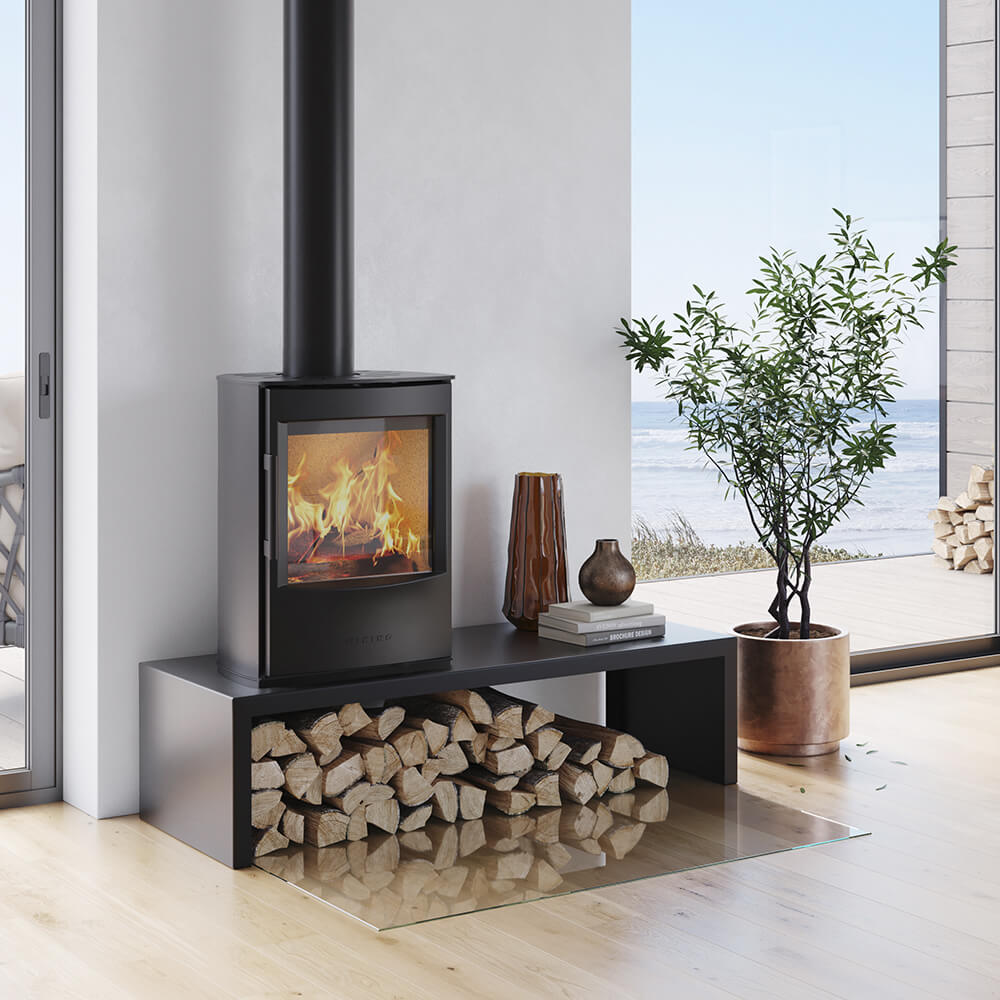
Noise from the wood-burning stove can occur – below you can see what you can do to remedy it.
Note: Most wood-burning stoves tick during heating and cooling.
It can be difficult to know which wood to burn in your wood-burning stove to get the most heat out of it.
In addition to being dry (maximum 12-18% moisture), each type of wood has its unique characteristics in terms of price and calorific value.
Measure the moisture in your wood yourself
Watch a video here ► on how to measure the moisture in your wood.
Calorific value of wood
It can be difficult to choose which wood to buy for your wood-burning stove – it all depends on how much heat you want to get out of it – some wood burns quickly and gives less heat. Some burns more slowly and provides good heat for a longer time.
If you have a wood-burning stove with natural stone cladding, it is important to follow the accompanying instructions when lighting the stove for the first few times. This is because natural stone needs to acclimatise to the high temperatures it is exposed to when the stove is in use.
The process includes three heating and three cooling periods. With each firing, the temperature increases, causing the natural stone to dry more and more, and the tensions in the stone disappear. If the heating occurs too quickly, the stone can crack.
We refer to the stove’s manual for detailed instructions.
What is creosote, and how does it form?
Measure the moisture in your wood yourself
Watch a video here ► on how to measure the moisture in your wood.
Optimal lighting
It is very important to get the fire going in your wood-burning stove from the start to achieve optimal combustion, so you get the most heat out of your wood.
Watch the video here ►
If there is poor draught in your wood-burning stove, you can check the following:
► It may be due to a defective bimetal spring. Remove the back plate and check if the bimetal spring is in order. You can see a video here ►
Note: It may vary slightly from model to model how the combustion chamber looks.
If you experience smoke coming out of the door when you open your wood-burning stove, it may be due to poor chimney draught.
Here are some things that can be done to remedy the problem:
With negative pressure in the room where the wood-burning stove is located, smoke problems can occur as the smoke seeps out when you open the door – it simply does not get sucked up into the chimney. With extreme negative pressure in the room, smoke may come out even when the door is closed.
If you live in a newer house with a ventilation system, there will be less pressure in the house than if you live in an older house. Negative pressure can also occur if the kitchen extractor fan is running.
You can alleviate the negative pressure by opening a window slightly or turning down the extractor fan. You can also buy a fresh air system for your wood-burning stove – ask your local retailer for more information.
It is recommended that the negative pressure in the house does not exceed 4Pa – this can be checked by the local heating engineer.
If you experience smoke coming out of the door when you open your wood-burning stove, it may be due to:
With proper storage and connection, a wood-burning stove will not rust. When a wood-burning stove rusts, it is often because it has been exposed to moisture from the chimney. You can minimize the risk of internal rust by lighting a fire a few times outside the heating season to ensure that the wood-burning stove dries out.
Especially in summer houses, where the temperature is often low indoors during winter, the temperature in the combustion chamber can become so low that water condenses on the metal surface of the wood-burning stove from the still air. The water can then cause rust. To avoid this, it is recommended to ensure ventilation in the wood-burning stove, possibly by leaving the air supply to the wood-burning stove slightly open during this period.
If the wood-burning stove rusts externally, it is usually because it has been stored in damp environments for a long time, where moisture has been able to settle on the surface.
White glass can occur due to improper use, such as:
► Lack of cleaning of the glass.
► Burning household rubbish and magazines, etc.
► Burning with non-approved fuel, including anthracite, coal, etc., which emits too much heat.
► Burning with pressure-treated wood or chipboard.
► Too much draught in the chimney. You can seek help from your chimney sweep or get advice and guidance from your retailer. Find your local retailer here ►
► Burning with an open ash pan. This allows false air to enter the combustion chamber, and the combustion will not be optimal.
If the glass becomes white and opaque and cannot be cleaned immediately, it may have sustained permanent damage. The glass in the wood-burning stove is a special ceramic glass that can withstand very high temperatures. However, at high temperatures, the glass is also very sensitive to chemicals. So if you burn magazines, newspapers, pressure-treated wood, etc., which contain various chemicals, there is a high risk of damaging the glass. This is not covered by the warranty.
If the glass in your wood-burning stove is sooting, there can be several reasons:
► The wood is not sufficiently dry (maximum moisture content is 12-20% water). You can measure the moisture in your wood with a moisture meter, which can be purchased at your local hardware store. In the video here ► you can see how to do it.
► The airwash system is not active (check this on the control lever at the front of the stove).
► The airwash system is malfunctioning (if the soot is unevenly distributed on the glass, this may be the case, and the door should be checked for loose gaskets or if it is skewed).
► Low chimney. This can be due to the chimney needing cleaning, being too low in relation to the roof ridge, or the chimney being sheltered, requiring assistance to achieve proper draught. You can have the draught in your chimney measured by a chimney sweep, who can also provide advice on how to remedy the problem.
► The combustion temperature is too low. This problem can be solved by adding more air to the combustion through the primary air supply. Sufficiently high combustion temperature is achieved when the vermiculite plates are completely clean.
If you still cannot get your wood-burning stove to work properly, you can check if you are lighting it in the optimal way.
